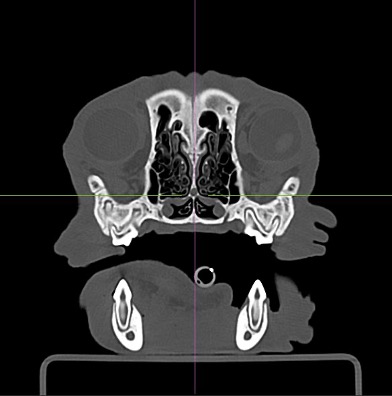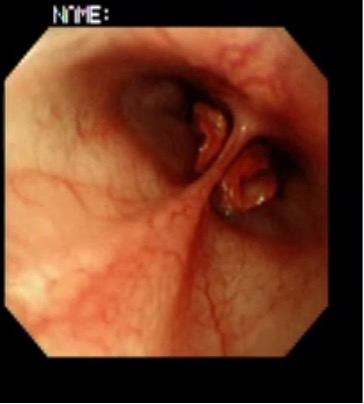Laser-assisted turbinectomy improves the outcome of BOAS surgery
The Soft Tissue Surgery service at Anderson Moores is one of only a few centres in the world to offer laser-assisted turbinectomy (LATE).
The procedure was pioneered by the University of Leipzig and the University of Cambridge. It is performed under endoscopic guidance using a diode laser fibre.
The decision to perform the LATE procedure is based on CT (Fig.1) and endoscopic findings (Fig.2), as well as response to the initial BOAS surgery.
Traditional BOAS surgery and LATE can be performed in a single session if significant intranasal obstruction due to overcrowded turbinates is noted on CT or endoscopy. Alternatively, the LATE surgery can be performed as a standalone procedure in patients that underwent BOAS surgery in the past but have residual clinical signs.
Recent studies from the University of Cambridge have confirmed that around 50% of dogs that underwent traditional BOAS surgery have significant residual upper airway obstruction and will benefit from laser assisted turbinectomy. Dogs with regurgitation secondary to BOAS are more likely to have resolution of the regurgitation if a LATE procedure is performed.
LATE appears to be frequently beneficial in Pugs and French Bulldogs. It is instead rarely indicated in the English Bulldog breed.
Do not hesitate to contact the Soft Tissue Surgery Service.

Fig.1 CT image of caudal aberrant turbinates

Fig.2 Endoscopic view of caudal aberrant turbinates protruding in the nasopharynx